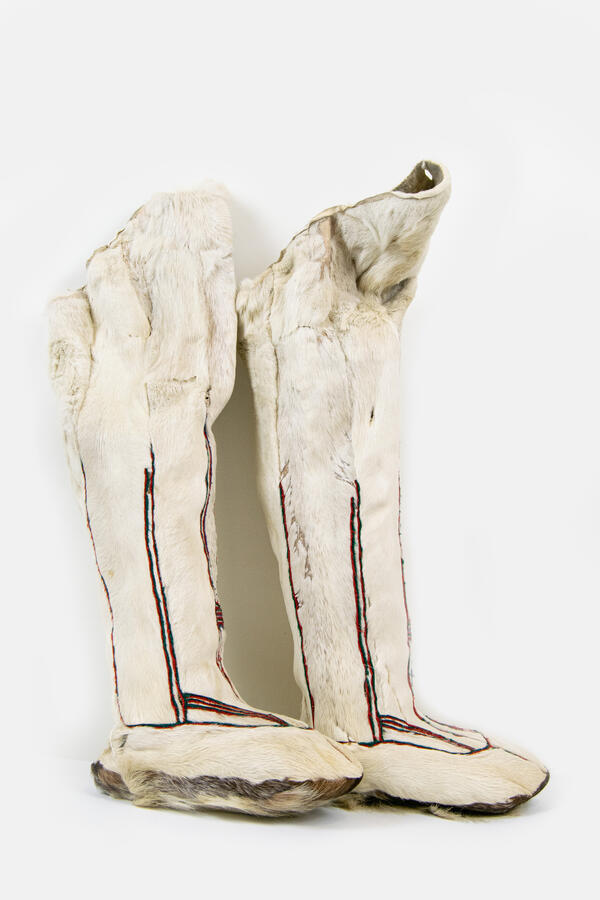Pimy (from the Nenets “piuy”) are traditional winter footwear of Finno-Ugric peoples and indigenous peoples of the Far North (Komi, Nenets, Khanty, Mansi). Reindeer fur boots imitate the foot of a reindeer, copying its structure. Everyday women’s footwear (pimy) has the same shape and cut as men’s, but there are a number of minor differences.
Sewing boots is done by women-chumkeepers. The boots consist of the sole, head and boot shaft. The oval sole, sewn from the deer’s hoof skin with the hair on the outside, is slightly tapered to the heel. The skin of this kind is called a bristle brush or kamus. The hairs on it are very stiff and look like porous tubes filled with air; they do not get soaked with moisture but repel it from their surface. The pile is directed forward to the toe part. The head of the boot is sewed from two strips of white pile outwards, the pile is directed forward, the seams are made on the front and back. The seams have narrow strips of cloth inserted into them. The boot shafts are high, slightly wider at the top, and their upper edge is shorter at the back than at the front. Ties made of woolen threads are used to fasten the high shafts to the wearer’s calves. All the seams are made with sinewy threads, by blanket stitching over the edge, and are practically invisible from the outside. Dry grass insoles are put inside the boots. Such footwear is usually worn with fur stockings. Pimy are sewn with the fur facing out. It takes from 8 to 13 skins to make one pair of boots. For cutting, templates of parts are used.
The main feature of pimy is that they are very warm, can withstand temperatures up to 60 degrees below zero and have the properties of a thermos. Kamus allows feet to breathe. Appliqué, painting or scraping are used to decorate the pimy. It all depends on the skill and taste of the woman sewing the boots. She has her own approach to each type of material. Women’s pimy are often decorated with a diamond-shaped pattern called “charred wood” or “calf’s horns”.
Pimy are special boots. They are not designed to be worn during slushy winters. Wet
snow does not have the best effect on fur boots. This type of fur footwear is
recognized as the warmest of all existing. Their warmth, comfort and durability
are appreciated by hunters, fishermen and geologists.




